
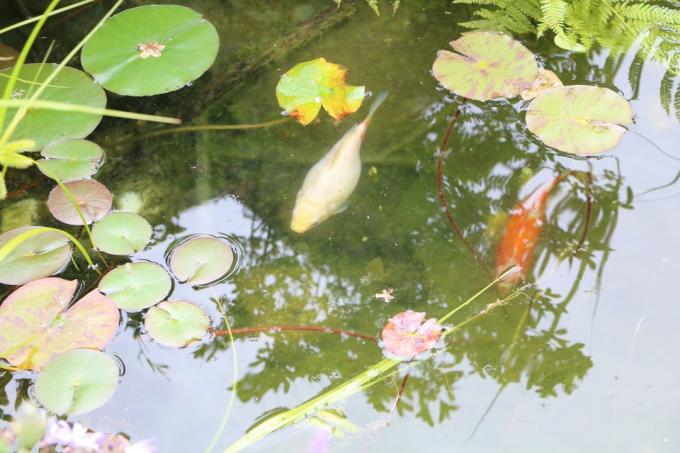
Table of contents
- Immediate measures against green pond water
- Medium-term measures against green pond water
- Long-term measures against green pond water
- Worth knowing about cloudy pond water in brief
The microscopically small floating algae cannot be filtered and swim freely in the water. A clear green coloration of the pond water then occurs with strong propagation. In this case one also speaks of an algal bloom. If the conditions are favorable for the floating algae, the multiplication can even be so strong that a depth of visibility of only a few centimeters is possible. Such excessive algae growth always means that there is an ecological imbalance in the pond. This can often be observed with a larger partial water change and with newly created ponds. A higher nutrient content in the water is the main reason for the development of floating algae. In summer as well as in spring, a high level of sunlight can also promote the acceleration of propagation. However, there are measures to achieve clear water in the pond again.
Immediate measures against green pond water
Since immediate measures do not eliminate the actual cause, they only help in the short term. However, you should not follow one of the biggest fallacies, namely simply changing the pond water, because they add additional nutrients to the pond water, which in turn produces more floating algae become. It is much more advisable to use a UVC clarifier. This primary clarifier is installed in front of the pond filter, which means that the pond pump pumps the green pond water through the UVC primary clarifier. Due to the UV light, the floating algae clump together and are then successfully filtered out by the pond filter. However, if you are already using a UVC clarifier, the glass bulb of the UV lamp should be checked for cleanliness. Furthermore, UV lamps that have been used for more than 1 year should be replaced immediately with a new lamp.
The primary clarifier should only be switched on if the UVC is required to eliminate floating algae. The strength of the UVC primary clarifier varies depending on the fish stock. Without fish, 1-2 watts should be used per 1,000 liters. On the other hand, 2-3 watts should be used with a fish stock of up to 1 kilogram and 1,000 liters of water and 4-5 watts with a koi stock of up to 3 kilograms and 1,000 liters. Another possibility of immediate action is the use of algaecides. The photosynthesis of the algae is inhibited by this agent, causing them to starve.
Medium-term measures against green pond water
You can only take the right countermeasures if you know your water parameters. Poor water quality is often the cause of pond problems and fish diseases. With the help of water analysis sets, you can check the water quality of your pond, with the optimal quality being a pH value of 7 to 8, GH value of 8 to 12 and a KH value of 5 to 12. The nitrite should also be < 0.15 mg per liter and the nitrate < 0.50 mg per liter. You can then use these values to assess the water quality very well and rectify problems in good time. If one or more values are not correct, counteract this accordingly with the help of water conditioners.
If all water parameters are correct you should reduce the excess nutrients that serve as food for any type of algae. To do this, you should first check the fish stock in the pond, as too many fish stocks often result in too high a nutrient content. A maximum of 3 kilograms of fish is recommended for 1,000 liters of pond water. The surplus part of the fish should be handed over to a higher stocking. Fish should also be fed with care, so it is recommended to only feed as much as the fish can eat in 5 minutes. As a rule, feeding once a day is sufficient, although small amounts should be fed and a special fish food low in phosphate should be used. If necessary, phosphate binders can also be used. Phosphate binders are usually naturally acting nutrient binders that are best used in moving water or integrated directly into the filter housing of the pond filter. Under certain circumstances, such a phosphate binder can also be placed directly in the pond. Binders, which consist of a filter material that deprive the green algae of their food base, are less common.
Long-term measures against green pond water
In order to take long-term measures, you should be prepared to avoid any nutrient input into your garden pond. Since there must be no direct connection between the surrounding area and your garden pond, otherwise nutrients could enter the pond Pond water would be made possible by rainwater, you should not only check the presence, but also the functionality of the pond capillary barrier clear up. To create such a barrier, place an approx. 15 cm wide and approx. 15 to 30 cm deep ditch. Then fill it with coarse gravel, which catches all nutrients reaching the pond and seeps into the ground.
Another possibility lies in very fast-growing aquatic plants, which remove nutrients from the garden pond and thus slow down the growth of algae. Waterweed, milkweed and meninges are suitable as such biological filters. From time to time these have to be thinned out due to their strong growth. Since pond plants are the algae's biggest food competitor, you should ensure that there are enough plants in your pond. In addition, solar radiation should be reduced, since these are energy suppliers for algae growth. Well-designed ponds are therefore only exposed to direct sunlight for a maximum of 6 hours a day. Create additional shade sources such as small trees or shrubs near the bank if your pond gets more sun. Lily pads or floating plants are also very helpful as they float on the surface. In an emergency, an awning can also protect against excessive solar radiation.
Worth knowing about cloudy pond water in brief
Cloudy water in the garden pond is always a sign that the biological balance is disturbed. This can have harmless causes, but it can also be dangerous:
- fine sand and clay in the newly established pond
- whirled up mulm
- enormous bacterial development
- Water bloom caused by the proliferation of floating algae
Reorganization of the pond
After a pond has been set up and filled, the water often looks cloudy, milky, light brown, gray or yellow. The discoloration usually comes from the leaching of dyes from organic remains. Likewise, loamy substrates can be suspended in the water. As soon as the water calms down and the suspended matter settles or the filters are used, the water clears and becomes clear.
Raised mulm
The layer of sludge lying on the bottom can be whirled up and then cause the water to become cloudy. The layer consists of dust, animal excrement, dead plant material, microorganisms, animal remains, i.e. floating particles that sink to the ground. It contains plenty of living food on many scales. Therefore, it is used by insect and amphibian larvae as a permanent residence. If there is movement in the pond, the layer of sludge can be stirred up. Although the water clears up again after a while when the suspended particles settle, a layer of sludge that is too thick in garden ponds should be removed. It is usually only necessary after a few years to at least partially remove them.
Enormous bacterial development
If the turbidity comes from a single spot, preferably at the bottom, if it is light, milky clouds show, one can assume that they are bacteria, the dead matter work up. Usually it is a dead animal, a frog, a bird, a mouse or a large, dead aquatic plant. There is a mass development of bacteria, which take the organic substances necessary for nutrition from dead organisms. The oversupply of food in the form of bacteria leads to a mass proliferation of unicellular and multicellular organisms that feed on them. The best thing to do here is to remove the dead animal, then the clouds will quickly dissipate. In general, a body of water is not damaged by such a process. The bacteria completely decompose the animal. The bacteria are eaten and the process is complete. In the case of small bodies of water and large animals such as a cat, the body of water can overturn.
Water bloom caused by floating algae
The water bloom can be triggered by different algae. This also allows the water to take on a different colour. Algae can be responsible for light or dark green, yellow or even reddish water. The bloom comes from the mass proliferation of algae. The silver carp is the floating algae eater par excellence. However, it is only suitable for large ponds. The UV water clarifier offers another way of destroying algae. The pond water flows through it and is irradiated. The algae die. The clumped algae are filtered out by the pond filter. In addition, the algae can be removed with biological algaecides.
 garden editorial
garden editorial I write about everything that interests me in my garden.
Learn more about algae in the pond
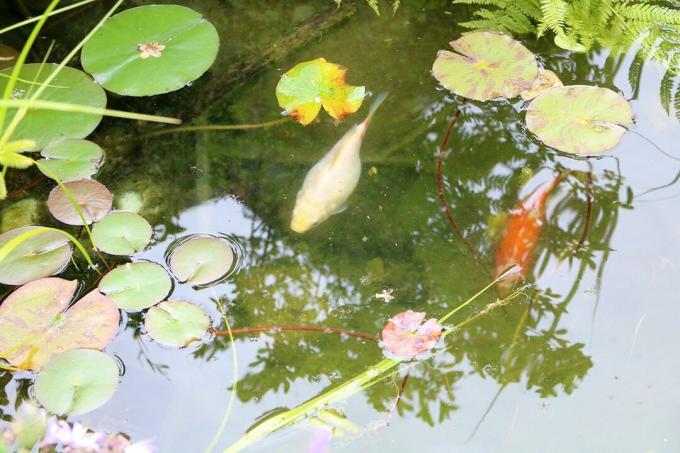
Floating algae in the pond: 10 tips for removing them
Algae infestation is not only unsightly to look at, but can also pose a threat to aquatic animals and plants. For this reason, it is advisable to always remove floating algae - read here how this works best!
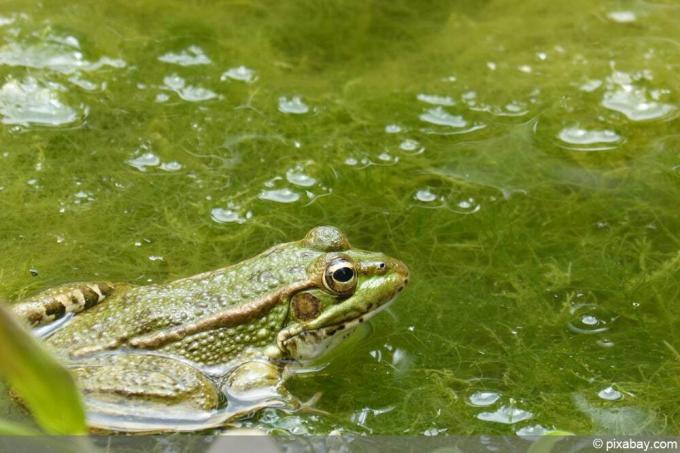
Algae eater in the pond: 5 hungry pond fish
Algae growth in the garden pond not only looks unsightly, but excessive growth can tip the entire ecosystem over. In this article we will tell you which types of fish, snails and mussels like to eat algae and what else helps against the "green plague".
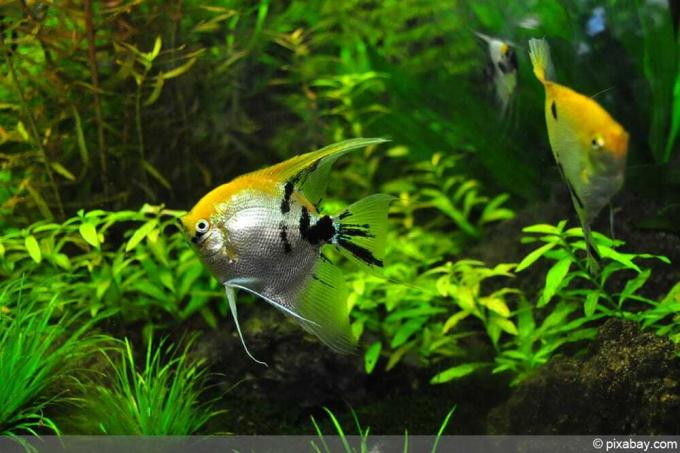
Combat thread algae in the aquarium
The right countermeasures must be taken at an early stage to ensure that the thread algae in the aquarium do not grow too rampant and become a nuisance. Otherwise, the aquatic plants can severely disturb the sensitive ecosystem of the aquarium and also negatively affect the visual appearance.
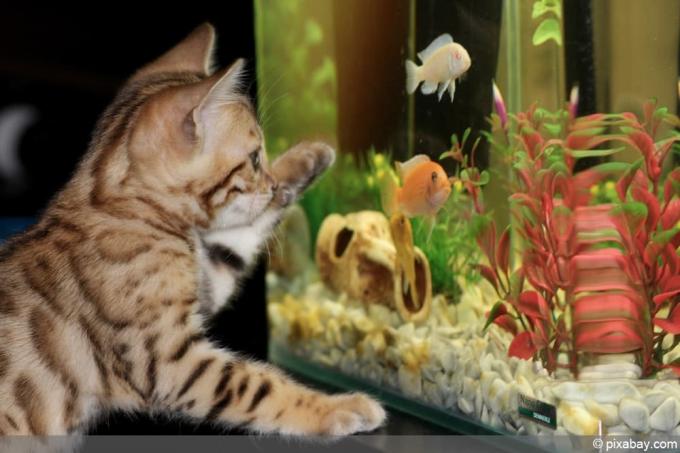
Get rid of green algae in the aquarium properly
Green algae occur in every aquarium. This is normal and part of it. It can even speak for a particularly good water quality. Only a massive increase in algae caused by too much light and too many nutrients is not normal. The green coloring and turbidity of the water means nothing other than that the biological balance has gotten out of joint. There are different green algae, also with quite different requirements. However, all benefit from an excess of food and can best be combated by depriving them of food.
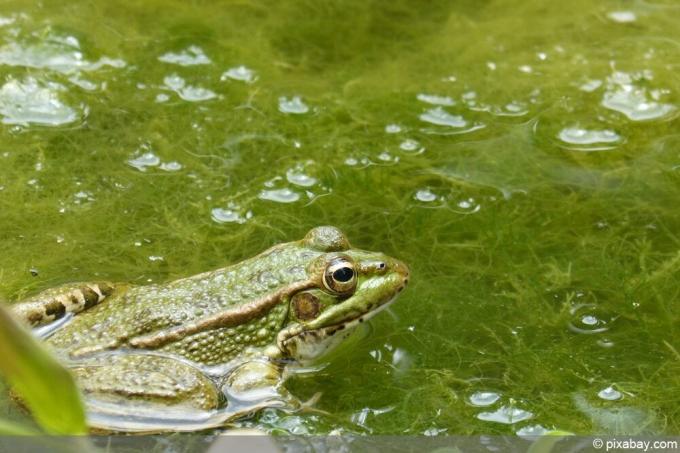
Natural remedies against thread algae
Algae in the garden pond are an absolute nuisance, but can hardly be avoided. Besides, they are useful too. They serve as food for microorganisms and also produce vital oxygen. It gets annoying when they multiply en masse.

The best home remedies for algae in the aquarium
Algae in the aquarium are absolutely natural and normally do not have to be fought. It only becomes difficult when they multiply explosively. There is a reason for this increase. It has to be found and turned off. That sounds simple, but it isn't.
